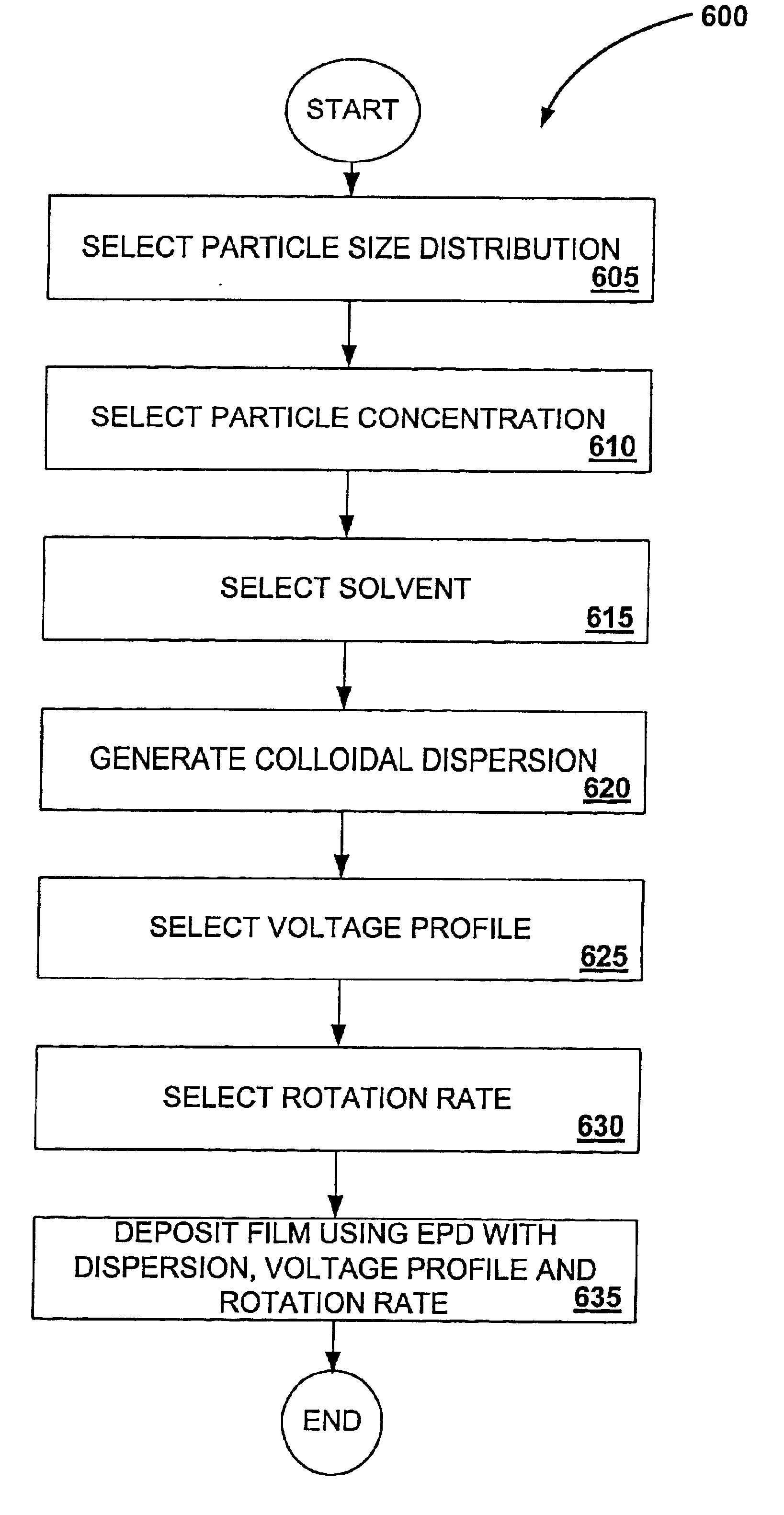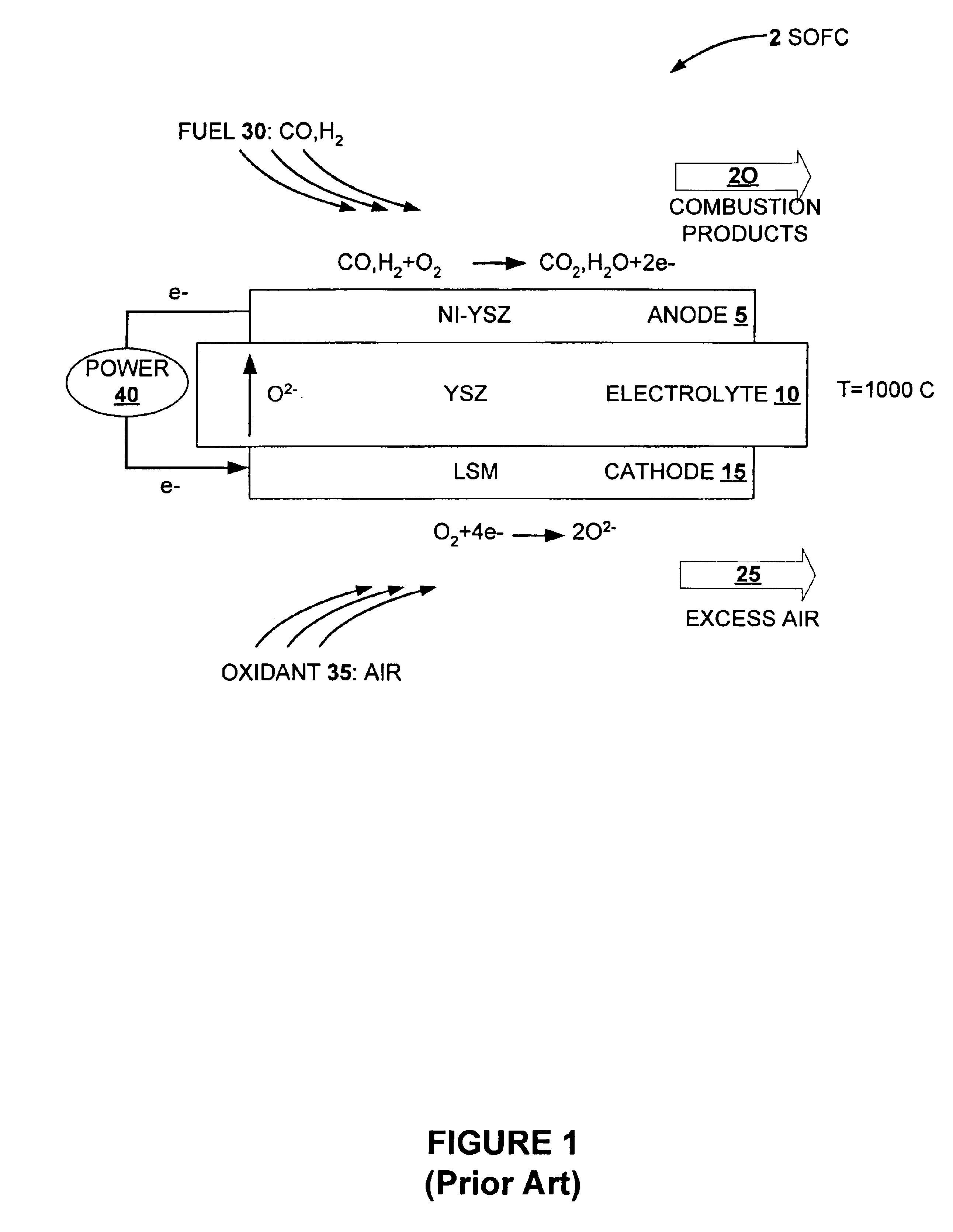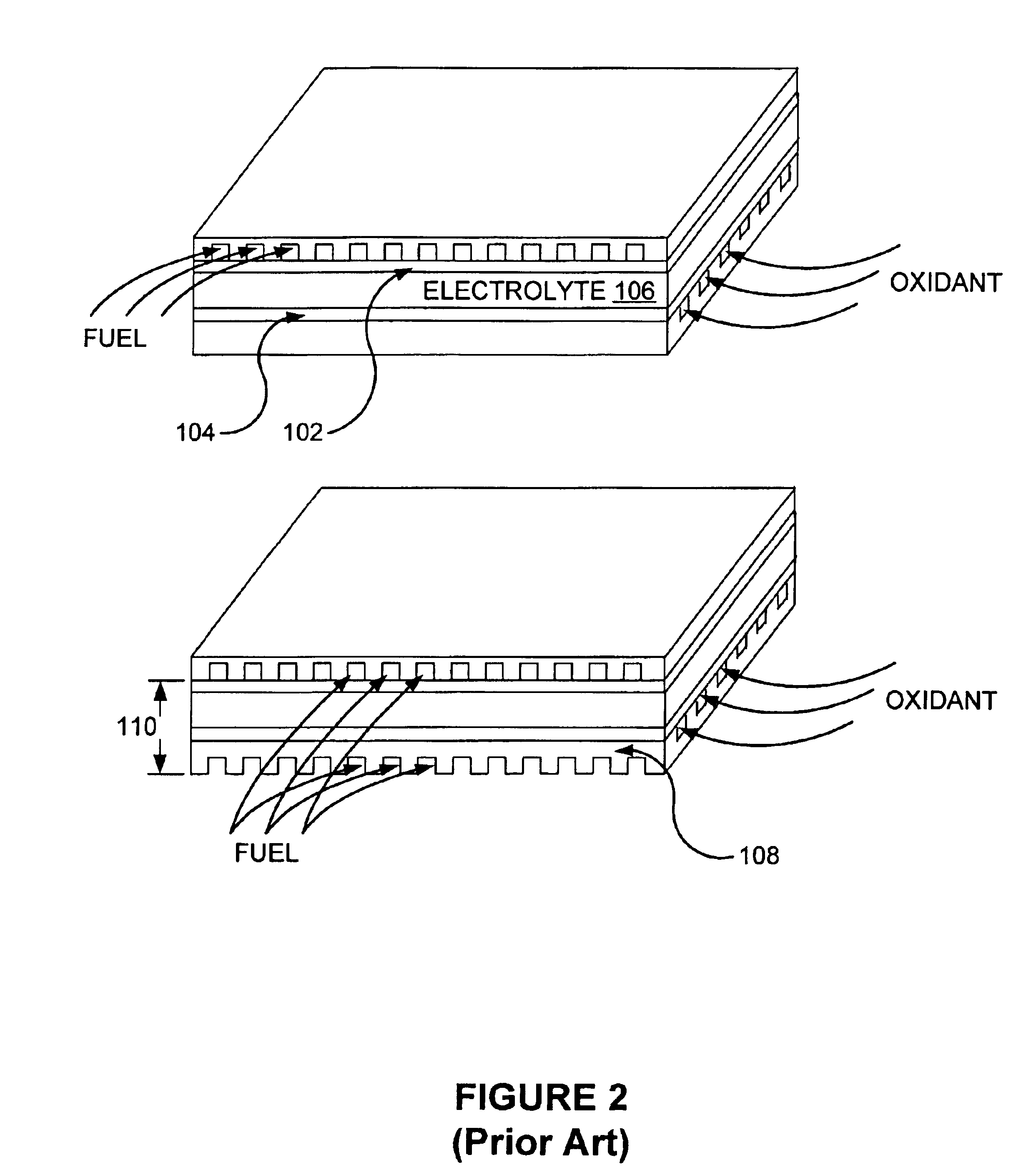Method for making thin-film ceramic membrane on non-shrinking continuous or porous substrates by electrophoretic deposition
- Summary
- Abstract
- Description
- Claims
- Application Information
AI Technical Summary
Benefits of technology
Problems solved by technology
Method used
Image
Examples
example 1
of YSZ Film on LSM Substrate
[0091]A porous LSM (˜30% porosity) in a tubular form was obtained from Siemens Westinghouse Power corporation. A suspension of 0.5 g YSZ (0.3 micron particle size) / 100 ml IPA was dispersed using a sonic probe for 5 min. The tube was sealed at both ends using Teflon tape and an electrical contact was made using an alligator clip. The counter electrode was stainless steel tube selected such that the inner diameter was ˜5 mm larger than the outer diameter of the LSM tube. The tube and counter electrode were immersed in the YSZ suspension in a glass beaker provided with a stirring bar. The solution was stirred to prevent settling of the powder. Electrophoretic deposition was conducted by applying 30 μA / cm2 using a potentiostat / galvanostat for a period of 5 min. The current was turned off and the sample removed and allowed to air dry. The sample was placed in a MoSI2 heating element furnace and heated at a rate of 5° C. / min to 1300° C. and held for 4 hours. Th...
PUM
| Property | Measurement | Unit |
|---|---|---|
| Temperature | aaaaa | aaaaa |
| Temperature | aaaaa | aaaaa |
| Temperature | aaaaa | aaaaa |
Abstract
Description
Claims
Application Information
 Login to View More
Login to View More - R&D
- Intellectual Property
- Life Sciences
- Materials
- Tech Scout
- Unparalleled Data Quality
- Higher Quality Content
- 60% Fewer Hallucinations
Browse by: Latest US Patents, China's latest patents, Technical Efficacy Thesaurus, Application Domain, Technology Topic, Popular Technical Reports.
© 2025 PatSnap. All rights reserved.Legal|Privacy policy|Modern Slavery Act Transparency Statement|Sitemap|About US| Contact US: help@patsnap.com



